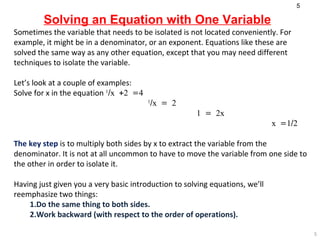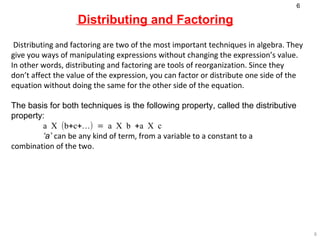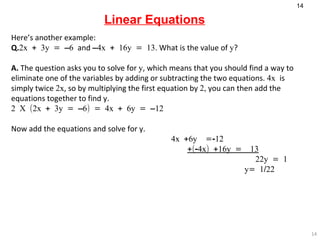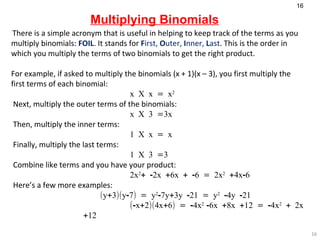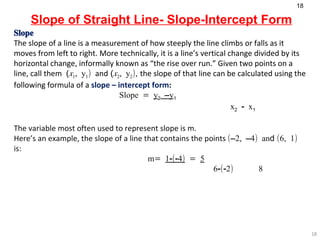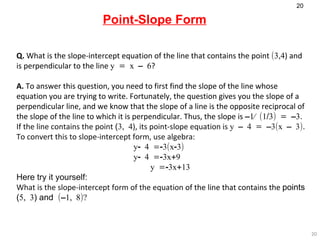This document provides an overview of basic algebra concepts including:
1. Variables, expressions, equations, and manipulating equations through addition, subtraction, multiplication and division while maintaining equality.
2. Solving one-variable equations by isolating the variable on one side of the equation.
3. Calculating the slope of a line using the slope-intercept form given two points on the line.



![Solving an Equation with One Variable To solve an equation with one variable, you must manipulate the equation to isolate that variable on one side of the equation. remember PEMDAS. Here you will go in reverse order ( SADMEP ! ). The idea is to “undo” everything that is being done to the variable so that it will be isolated in the end. Let’s look at an example: Solve for x in the equation [(3x 2 +5)X3]/4 +1 = 61 First, subtract 1 from both sides of the equation: [(3x 2 +5) X 3] /4+1 -1 = 61-1 => [(3x 2 +5) X 3]/4 = 60 Then, multiply both sides of the equation by 4: (3x 2 +5) X 3 = 60 X 4 => (3x 2 +5) X 3 = 240 Next, divide both sides of the equation by 3: (3x 2 +5) X 3 ÷3 = 240÷3 =>(3x 2 +5) = 80 Now, subtract 5 from both sides of the equation: 3x 2 +5-5 = 80 -5 => 3x 2 = 75 Again, divide both sides of the equation by 3 : 3x 2 ÷ 3 = 75÷3 => x 2 = 25 Finally, take the square root of each side of the equation: x = ±5 , We have isolated x to show that x = ±5 .](https://image.slidesharecdn.com/mathtest02-1227672355764985-9/85/slide-4-320.jpg)
